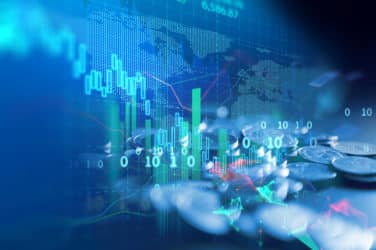Artificial intelligence aka machine learning may be relatively new on the financial-services scene, but experienced actors are needed for it to be a successful show.
Interest in artificial intelligence and machine learning is experiencing a renaissance as the price of computing and data storage continue to decline and the amount available data rises dramatically, according to industry experts.
#MarketTalks: Artificial Intelligence & the Next Data Frontier #AI @predictwallst @portware @jillmalandrino https://t.co/GnpYQDji37
— Nasdaq (@Nasdaq) May 22, 2017
However, firms should first dip their toes into the technology before leaping into the deep end, advised Henri Waelbroeck, director of research at Portware, a FactSet company.

Henri Waelbroeck,
Portware
“Not everything that calls itself AI is AI in our industry,” Waelbroeck said Monday in a MarketTalks panel, a Nasdaq-Markets Media production. “It’s dangerous to use machine learning right out of the box without a good understanding of the analytical structure of what you are trying to model.”
“It just like power tools,” agreed Craig Kaplan, founder and CEO of PredictWallStreet and fellow panelist. “They give you a whole lot of capabilities, but you’ll able to cut yourself more easily if you don’t know what you are doing.”
Portware is addressing the issue by developing the ability that would let its users inject analytical models that are designed by quants who understand the structure of the problem with machine learning that will bring in other information to improve the performance of those analytical models, according to Waelbroeck.
The challenging part for institutional investors is that there are more “power tools” that employ typical and, alternative data are becoming available every day.
“The new data is coming from sources like sensory data, social media, satellite data, and specialized commercial data sets,” noted Michael O’Rourke, head of machine intelligence and data services at Nasdaq.
Firms need to figure out which data sets are appropriate as well as large enough and clean enough to avoid the first computer law of “garbage in, garbage out,” added Kaplan.
PredictWallStreet uses collective intelligence derived from 70 million opinions on expected market moves from retail investors it has collected since 2005 to identify potential alpha signals.
Nasdaq has partnered with PredictWallStreet and other data providers and launched its Nasdaq Analytics Hub in mid-May.

Mike O’Rourke, Nasdaq
“The platform brings together these data sets and makes it easier for firms to take them on board,” said O’Rourke. “Nasdaq has done the vetting, backtesting and layered machine intelligence on top of that.”
Even with the cleanest data, AI and machine learning are not panaceas for all the stages of a trade’s lifecycle, such as smart order routing.
Citing research from the interdisciplinary econophysics community, Portware’s Waelbroeck estimated that 99% of the price movements at the market microstructure level is not due to new information but the market feeding of self-generating activity.
“On the other hand, the system as a whole behaves intelligently and maintains market efficiency effectively through systems of strategies that are reacting on a very quick turnaround timescale,” he added.






